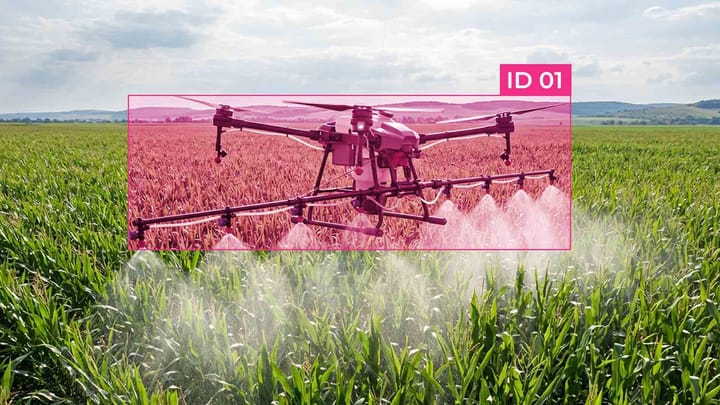Domain-Specific Synthetic Data Generation for Industry AI

In modern industry, the effective use of artificial intelligence largely depends on the quality and availability of data. Traditional methods of collecting real-world data often face limitations due to high costs, safety risks, and privacy concerns.
Synthetic data opens new opportunities for domain adaptation of models and improving AI performance without relying on limited real-world datasets. A critical aspect of this approach is data realism, which allows modeling real production processes, user behavior, or operational scenarios without losing essential system characteristics.
Industrial companies implementing domain-specific synthetic data gain the ability to accelerate model training, optimize processes, and reduce risks associated with testing on real systems.
What Artificial Information Means for Businesses
Artificial information, generated through domain-specific synthetic data, fundamentally changes how businesses approach AI development and deployment. Unlike conventional datasets, which are often limited in scope and expensive to collect, artificial information can be produced at scale within simulated environments, providing companies with rich, diverse, and highly controlled data tailored to their specific operational needs.
For businesses, this means faster model training cycles, reduced dependency on sensitive or scarce real-world data, and the ability to test AI systems under various scenarios without disrupting actual operations.
Transforming AI Development Cycles
The adoption of domain-specific synthetic data is reshaping AI development cycles across industries. Traditional AI workflows often face bottlenecks due to the time and cost required to collect, clean, and annotate real-world data.
Equally important is the data realism embedded in synthetic datasets. Accurately replicating real-world conditions ensures that AI systems trained on artificial data remain robust and reliable when applied to actual operations.
Fundamentals and Benefits of Synthetic Data Generation
Domain-specific synthetic data generation forms the foundation for modern industrial AI applications. At its core, it involves creating artificial datasets replicating real-world data characteristics while remaining fully controllable and scalable. By operating within simulated environments, businesses can define precise parameters, scenarios, and edge cases that may be rare or impractical to capture.
The benefits of this approach are multifaceted. First, it enables rapid experimentation and domain adaptation, training models for specific operational contexts with minimal dependency on costly or limited real-world data. Second, synthetic data offers unparalleled flexibility: businesses can generate datasets tailored to evolving needs, ensuring consistent data realism that mirrors actual processes. Third, it significantly reduces operational risks by allowing AI systems to be tested under diverse conditions without impacting live systems.
Enhancing Data Diversity and Quality
One of the most significant advantages of domain-specific synthetic data is its ability to enhance data diversity and quality. Traditional datasets often suffer from biases, gaps, or underrepresented scenarios, limiting the effectiveness of AI models. Since the datasets are artificially generated, they do not rely on personally identifiable information or confidential operational data, reducing compliance risks and safeguarding privacy. This allows companies to train, test, and refine AI models confidently while maintaining regulatory and ethical standards.
When combined, data realism, diversity, and privacy protection make synthetic data indispensable for industrial AI. Companies can improve model accuracy, explore previously inaccessible scenarios, and maintain security, all without compromising quality or operational integrity.
Protecting Sensitive Information
Operational data, personal information, and proprietary workflows often contain highly sensitive content, making it risky or impossible to use directly for AI training. Domain-specific synthetic data addresses this challenge by enabling companies to generate datasets that accurately reflect operational realities without including any actual confidential information. Organizations can replicate complex processes, rare scenarios, and edge cases operating in simulated environments without exposing real-world data.
Synthetic data allows for secure collaboration between teams, partners, or external AI providers, as no sensitive information is transmitted or shared. Companies can run large-scale experiments, fine-tune models, and conduct quality assurance without risking data leaks. Notably, the data realism of synthetic datasets ensures that AI models retain high performance and reliability, even when trained entirely on artificial data.
Furthermore, synthetic data enables risk-free testing and validation of AI systems. Industrial models can be subjected to extreme conditions or failure scenarios that would be too dangerous or costly to replicate in real life.
Implementing domain-specific synthetic data in Industry Applications
The process begins with identifying the key datasets and scenarios most critical to the AI system's objectives. Businesses can use simulated environments to replicate these scenarios at scale, capturing rare events, complex interactions, and edge cases that may be difficult or dangerous to observe in real life.
Once generated, synthetic datasets support domain adaptation by allowing models to learn patterns specific to the operational context. This is particularly valuable in manufacturing, logistics, and energy industries, where processes are highly specialized and variability can significantly impact model performance.
The implementation process also emphasizes continuous validation and iteration. Synthetic data can be refined based on feedback from real-world testing, improving data realism over time and ensuring that AI systems remain aligned with evolving operational needs.
Defining Domain-Specific Requirements
- Analyze the Target Domain. Identify the unique operational conditions, processes, and constraints the AI system must address. Understanding these factors ensures that synthetic datasets are relevant and actionable.
- Identify Key Variables and Scenarios. Determine the critical variables, operational scenarios, and performance metrics. These can be modeled using simulated environments to capture the complexity of real-world conditions.
- Plan for Domain Adaptation. Ensure that the synthetic datasets support domain adaptation, allowing AI models to learn patterns specific to the operational context.
- Ensure Data Realism. Design synthetic data to reflect real-world nuances, including rare or extreme events, environmental factors, and system interactions. High data realism ensures models perform accurately and robustly.
- Iterate and Validate. Continuously refine synthetic datasets based on feedback from real-world testing to improve accuracy and alignment with evolving operational needs.
Tailoring Data Generation to Business Needs
- Define Business Objectives. Clearly outline the goals the AI system should achieve, such as process optimization, predictive maintenance, or anomaly detection. This ensures that the synthetic data generated supports meaningful outcomes.
- Identify Relevant Scenarios. Focus on the specific situations, workflows, and edge cases that matter most to the business. Using simulated environments, these scenarios can be replicated at scale to train models effectively.
- Prioritize Critical Variables. Determine which operational parameters and indicators are most influential for decision-making. Ensuring that synthetic datasets reflect these factors enhances data realism and model accuracy.
- Integrate Domain Adaptation. Adapt data to the particular characteristics of the target environment so that AI models can transition smoothly from synthetic to real-world applications.
- Continuously Refine Datasets. Monitor AI performance and iteratively adjust synthetic data generation to better match evolving business needs, operational changes, or new priorities.
Methods and Techniques Behind Synthetic Data Generation
The effectiveness of domain-specific synthetic data relies on the methods and techniques used to generate it. Modern approaches leverage a combination of simulated environments, algorithmic modeling, and machine learning to produce datasets that are both scalable and realistic.
One common technique is procedural generation, where data is created according to predefined rules and constraints that reflect real-world operations. This approach allows for precise control over variables and ensures that datasets capture critical operational patterns. Another technique involves generative models, such as GANs (Generative Adversarial Networks) or VAEs (Variational Autoencoders), which learn from existing data to produce new, realistic samples.
Hybrid approaches combine simulation and learning-based methods, producing datasets with high data realism while maintaining flexibility and scalability. Simulated environments can model complex industrial processes, extreme scenarios, and rare events that are difficult or impossible to capture with real data.
Random and Rule-Based Generation Methods
Random and rule-based generation methods form two foundational approaches in domain-specific synthetic data generation. Both methods leverage simulated environments to produce datasets that support AI training, but they differ in their design and control.
Random generation creates data by sampling values within defined ranges or distributions. This approach is beneficial for exploring a wide variety of scenarios, including rare or extreme conditions that might not appear frequently in real-world datasets. By introducing variability in a controlled manner, random generation helps enhance data realism and ensures that models are exposed to diverse situations, improving robustness and generalization.
Rule-based generation, on the other hand, relies on predefined logical rules and constraints derived from the operational domain. This method ensures that generated data aligns with known processes, physical laws, or industry standards. Rule-based approaches are essential for modeling structured systems where adherence to specific patterns is critical, supporting effective domain adaptation and reliable model behavior.
Leveraging Generative Adversarial Networks and Variational Autoencoders
Generative models such as Generative Adversarial Networks (GANs) and Variational Autoencoders (VAEs) have become key tools in domain-specific synthetic data generation. These models enable businesses to create highly realistic datasets by learning complex patterns from existing data and reproducing them in new, artificial samples.
GANs consist of two neural networks: a generator and a discriminator that work in opposition. The generator creates synthetic data, while the discriminator evaluates its realism against real data. This adversarial process results in highly detailed and accurate datasets, supporting data realism and ensuring that AI models can generalize effectively to real-world scenarios. GANs are particularly effective for modeling complex distributions and generating high-fidelity samples in industries such as manufacturing, logistics, and energy.
VAEs, on the other hand, encode data into a probabilistic latent space and then decode it back into synthetic samples. This approach allows for controlled generation and smooth interpolation between data points, making it ideal for simulating gradual variations and rare events. VAEs also facilitate domain adaptation, as models trained on VAE-generated data can adapt more readily to real operational conditions.
These generative techniques enable AI systems to learn from rich, high-quality data without exposing sensitive information or relying solely on costly real-world datasets, accelerating deployment and improving performance across industrial applications.
Summary
Domain-specific synthetic data generation is transforming how businesses develop and deploy AI in industrial applications. By leveraging simulated environments, organizations can create controlled, scalable datasets that mirror real-world conditions while avoiding the limitations of costly, scarce, or sensitive real-world data.
Businesses can safely train, test, and validate AI systems without exposing confidential operational or personal data, while still capturing rare events, edge cases, and complex interactions that are critical for robust model performance. Using simulated environments, companies can replicate critical scenarios and prioritize variables most relevant to decision-making. This ensures that AI models are aligned with real operational needs and capable of providing actionable insights.
FAQ
What is domain-specific synthetic data?
Domain-specific synthetic data is artificially generated data tailored to a particular industry or operational context. It is created within simulated environments to ensure high data realism and support effective domain adaptation for AI models.
Why is synthetic data important for industrial AI?
Synthetic data enables faster model training and testing of rare scenarios, reducing reliance on costly or sensitive real-world data. It ensures AI systems perform accurately while preserving data realism.
How do simulated environments enhance synthetic data?
Simulated environments allow controlled replication of real-world processes, edge cases, and rare events. This approach increases dataset diversity and supports domain adaptation for more reliable AI models.
What is domain adaptation in synthetic data?
Domain adaptation ensures AI models trained on synthetic datasets can generalize effectively to real-world conditions. It aligns artificial data with operational realities while maintaining data realism.
What are the benefits of using synthetic data for businesses?
Synthetic data accelerates AI development, improves predictive accuracy, and protects sensitive information. It also enables safe experimentation in simulated environments without disrupting live systems.
How does synthetic data protect sensitive information?
Since synthetic datasets are artificially generated, they contain no real personal or proprietary data. This minimizes privacy risks while maintaining data realism for accurate AI training.
What methods are used to generate synthetic data?
Synthetic data can be produced using random sampling, rule-based approaches, or generative models like GANs and VAEs. Each method contributes to diversity, realism, and effective domain adaptation.
What is the role of GANs in synthetic data generation?
Generative Adversarial Networks (GANs) create high-fidelity data by iteratively improving generated samples against real data. They enhance data realism and help AI models generalize to complex industrial scenarios.
How do rule-based and random generation methods differ?
Rule-based methods use predefined operational rules to generate valid data, while random methods introduce variability and cover rare scenarios. Together, they improve dataset diversity and maintain data realism.
Why is data realism critical in synthetic data?
Data realism ensures synthetic datasets accurately reflect real-world conditions, making AI predictions reliable and actionable. It is essential for domain adaptation and effective deployment in industrial applications.



Comments ()